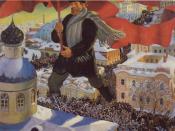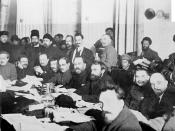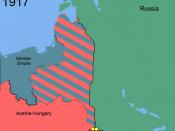The year 1917 was a critical year for the people of Russia, and for the world at large. In March of that year, the last major autocratic government in Europe was overthrown, and was replaced with a republic. The new republic was controlled by two conflicting institutions, the Provincial Government and the Soviets. However, by November of that same year, the Bolsheviks had taken over control of Russia. The Bolsheviks were able to seize power because of three wrongly made decisions of the Provincial Government; their decision to stay in World War I, their decision to allow the return of Vladimir Lenin, and their decision to arm the Bolsheviks in the Kornilov revolt.
The fateful decision of staying in the Great War weakened the Provincial Government, and paved the road to Bolshevik takeover. In the summer of 1917, the Provincial Government launched an attack on the Germans and Austro-Hungarians at Galicia.
This offensive was a total failure, and throughout the preceding months, Germany continued to take over Russian territories. The war effort cause instability in Russia, as employment and inflation plagued the society. The soldiers themselves were becoming weary of the failure of the Russian military leadership, and an estimated two million soldiers deserted in that year. The people of Russia were disappointed with the Provincial Government, while it tried to find balance between war and internal dissents. For example, in the country side, peasants began to take over land from landlords, as they sought to divide the land equally. The Provincial Government responded by suppressing the peasants by force, which angered the peasants. In short, the Bolsheviks represented a new hope of peace and stability, which the people of Russia yearned.
The Provincial Government contributed to their eventual downfall by allowing Vladimir Lenin back in St. Petersburg.


